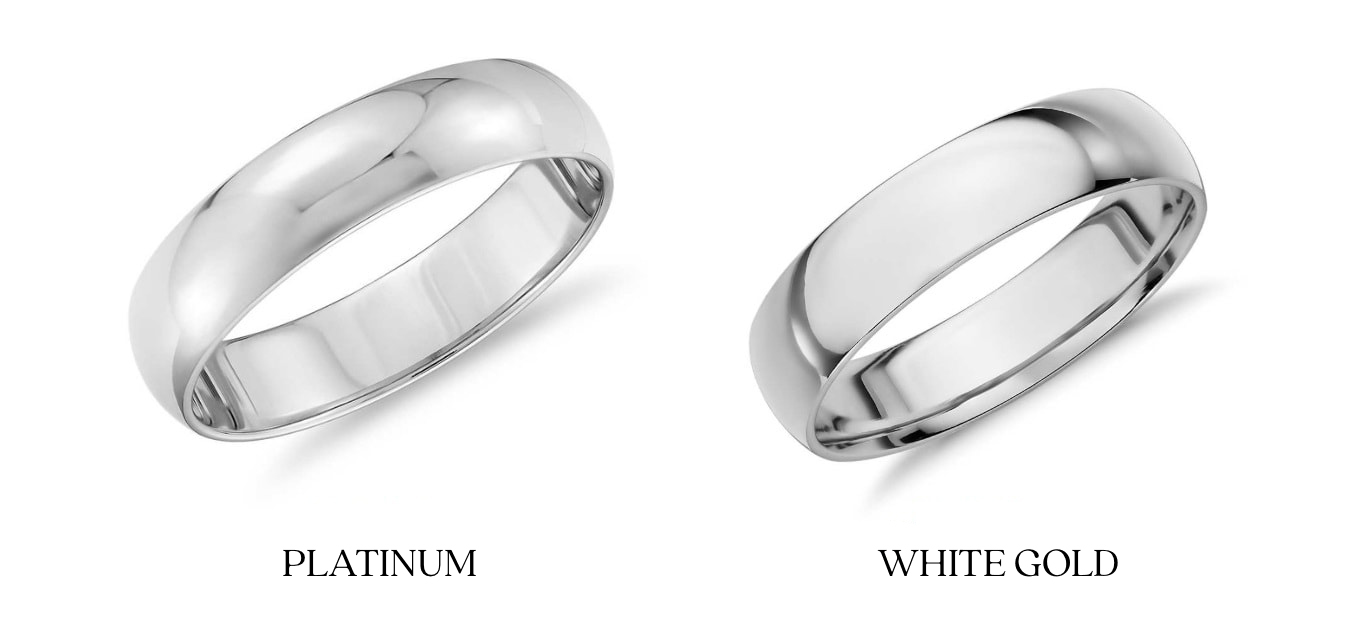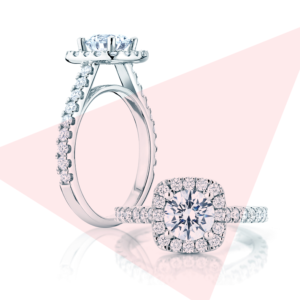 Uncategorized
Uncategorized
The difference between platinum and white gold: understanding the nuances of these 2 precious metals
In the world of engagement rings, 2 precious metals often rival for the spotlight: platinum and white gold. Although these two materials may seem similar at first glance, they actually have differences that
can influence a buyer’s choice. In this article, we’ll explore these distinctions to help you better understand the subtilities of these precious metals and choose the one that best suits your tastes and
needs.
Composition
Let’s start by examining the basic compositions of these two metals.
Platinum
Platinum is a rare and precious metal, known for its exceptional purity and durability. It is generally composed of 95% pure platinum, with minor alloys of metals such as iridium, palladium, rhodium or cobalt to enhance its physical properties.
White gold
Contrary to what its name suggests, white gold is not a pure metal. It is made by combining yellow gold with other white metals such as palladium, nickel or silver. This combination creates a white hue that resembles platinum.
Looks and shade
One of the most obvious distinctions between platinum and white gold lies in their appearance and tint.

Platinum
Platinum has a naturally silvery-white shade that does not tarnish over time. Its neutral color enhances diamonds and other precious stones, giving them a dazzling setting without competing with their brilliance.
White gold
White gold has a slightly silvery white color, although this can vary according to its composition. However, white gold is often plated with rhodium, a precious metal in the platinum family, to give it an even whiter, brighter finish.
Durability and endurance
When it comes to durability and resistance, platinum and white gold have distinct properties.
Platinum
Platinum is exceptionally long-lasting and resistant to everyday wear and tear. It is also hypoallergenic, making it an ideal choice for people with sensitive skin. Plus, platinum is a dense, heavy metal, which lends a sense of quality and solidity to any piece of jewelry made from it.
White gold
Although white gold is equally resistant, it is less durable than platinum. Its surface can be subject to wear and oxidation over time, which may require regular maintenance to preserve its brilliance. In addition, some people may be allergic to the metals used in the alloying of white gold, particularly nickel.
Price
Finally, let’s look at price and affordability.
Platinum
Generally more expensive than white gold due to its rarity and purity. It is often regarded as the ultimate symbol of luxury, which is reflected in its higher price.
White gold
While also a luxurious choice, is often more affordable than platinum. This makes it an attractive option for those seeking beauty and quality without the exorbitant price tag associated with platinum.
Although platinum and white gold share superficial similarities, their differences in composition, appearance, durability and price are important to consider when choosing an engagement ring. Whether you opt for the timeless prestige of platinum or the more accessible brilliance of white gold, each of these precious metals offers its share of elegance that will enhance your ring. If you’re looking for an engagement ring expert, look no further. With our in-depth knowledge and commitment to ethical sourcing, our team is here to help you every step of the way.
Contact us today to learn more.

